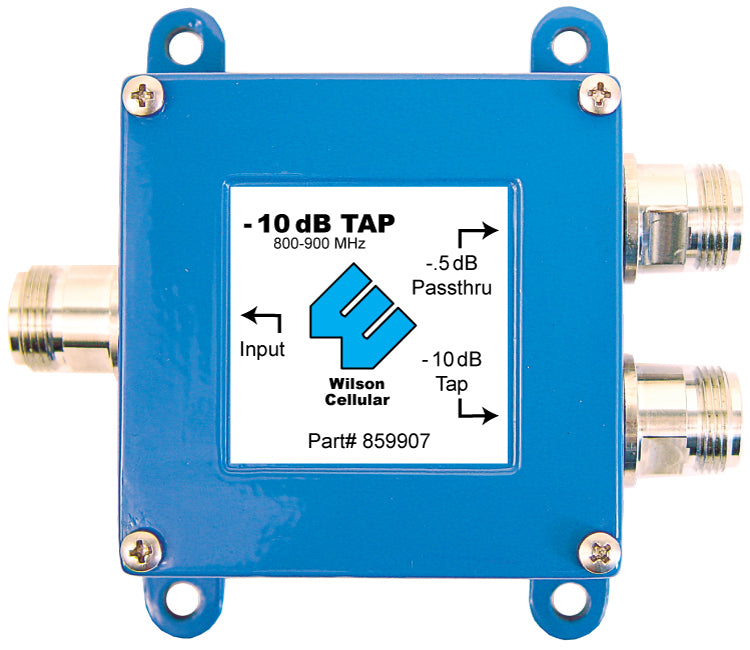Wilson 859907 Dual-Band -10 dB Tap with N-Female Connectors
90-Day Returns • Free Shipping $100+ • 2-Year Warranty
How to Choose the Right Antennas for Your Booster
Outside Antennas:
- Yagi Directional Antenna: This antenna is more powerful because it focuses on sending and receiving signals in one direction. It works best when there are no major obstacles blocking its path to the cell tower. It's not ideal for areas with large obstructions like hills or buildings.
- Omni Antenna: This antenna sends and receives in all directions, so it's better for hilly areas or if you need to support multiple carriers with towers in different directions. It doesn’t need to be aimed, but it also isn’t as strong as the Yagi antenna.
- High Gain LPDA Antenna: Perfect for areas with very weak signals, this antenna significantly boosts signal strength. It needs a clear line of sight to the cell tower and requires a sturdy mount because of its size.
- High Gain Omni Antenna: Similar to the standard omni, this antenna receives signal from all directions but delivers significantly higher gain across all supported bands. It’s a much stronger option when you want more inside coverage than a standard omni will provide, especially in areas with weaker outside signal.
Inside Antennas:
- Panel Antenna: Can be placed on walls or ceilings and directs the signal towards a specific area. This antenna is great for homes and tall ceilings in buildings.
- Standard Dome Antenna: Designed to be mounted on the ceiling, this antenna spreads the signal evenly throughout the area. It's best suited for drop ceilings or spaces where cables can be run above the ceiling.
- Ultra-Thin Dome Antenna: This slim antenna also mounts to the ceiling, but is much is less noticeable. It's much stronger than a standard dome antenna, making it a great choice for places where both looks and signal strength are important.
Tips for Choosing:
- Choose Omni Antennas for general coverage with no aiming required.
- Choose Directional Antennas (Yagi or LPDA) when you can point directly at a cell tower and need stronger signal and more inside coverage.
- Interior Size Considerations: One antenna per 750-1,500 sq ft in homes, or 1,500-2,500 sq ft in open spaces like offices and warehouses.
Product Overview
Product Overview
The 50 Ohm signal splitter is an essential tool for enhancing signal distribution within complex environments. Here's how it stands out:
- Wide Frequency Range: It operates across a frequency range of 700 to 2700 MHz, making it versatile enough to handle a variety of signal boosters and RF equipment, suitable for nearly any installation requirement.
- Robust Connectors: Equipped with durable N Female connectors, this splitter provides reliable connectivity, crucial for maintaining consistent signal flow in demanding settings.
- Efficient Signal Splitting: With a -10 dB tap, it expertly splits amplified signals to multiple inside antennas while minimizing signal loss. This is key for areas that require differentiated signal distribution, from small rooms to large spaces.
- Low-Loss Signal Throughput: Engineered to ensure low-loss signal throughput, it preserves the quality and strength of the signal across all connections. This feature is vital in large commercial buildings, industrial sites, and residential complexes with intricate layouts.
- Optimal Signal Control: This splitter allows for precise signal control, ensuring that smaller areas do not get overwhelmed by strong signals, while larger spaces receive sufficient coverage.
For any installation where maintaining signal integrity and distribution efficiency is critical, the 50 Ohm signal splitter with its specialized -10 dB tap provides an effective solution for managing and optimizing indoor antenna systems, thereby enhancing cellular connectivity.
Specifications
Specifications
-
SKU859907
-
UPC813986004326
-
ConditionNew
-
Impedance
-
ConnectorN-Female
-
dB Loss


